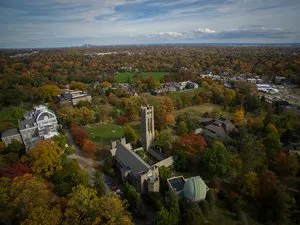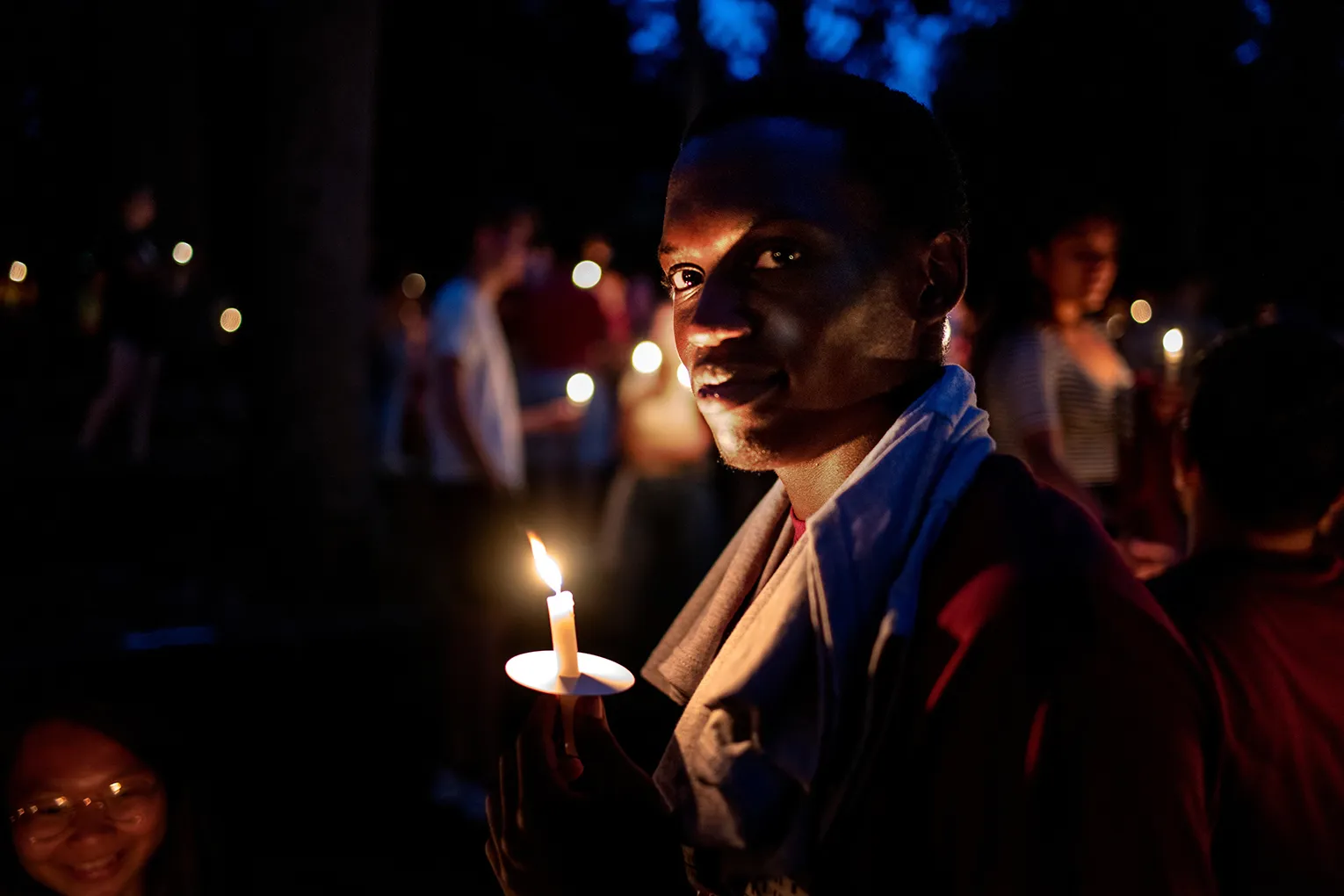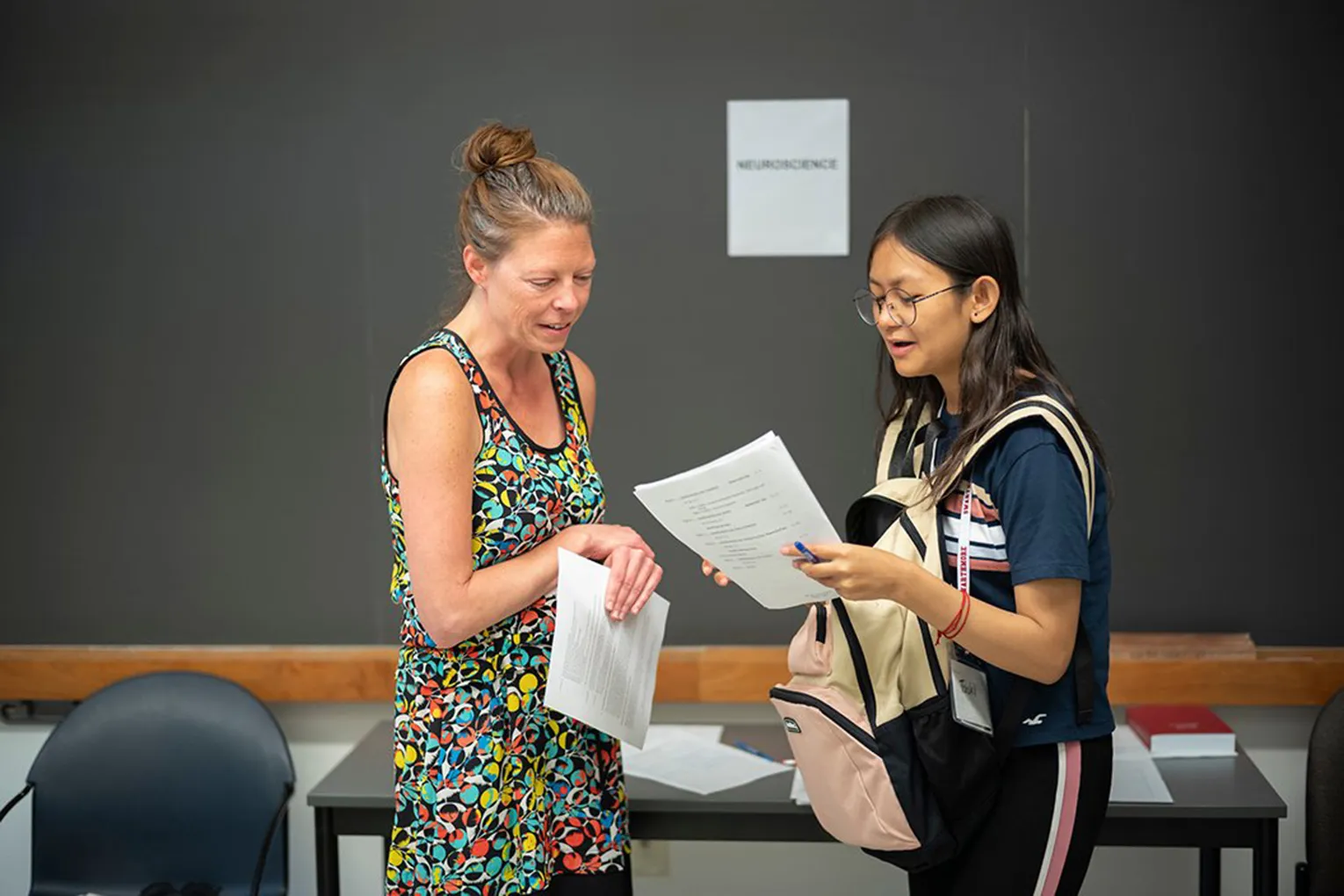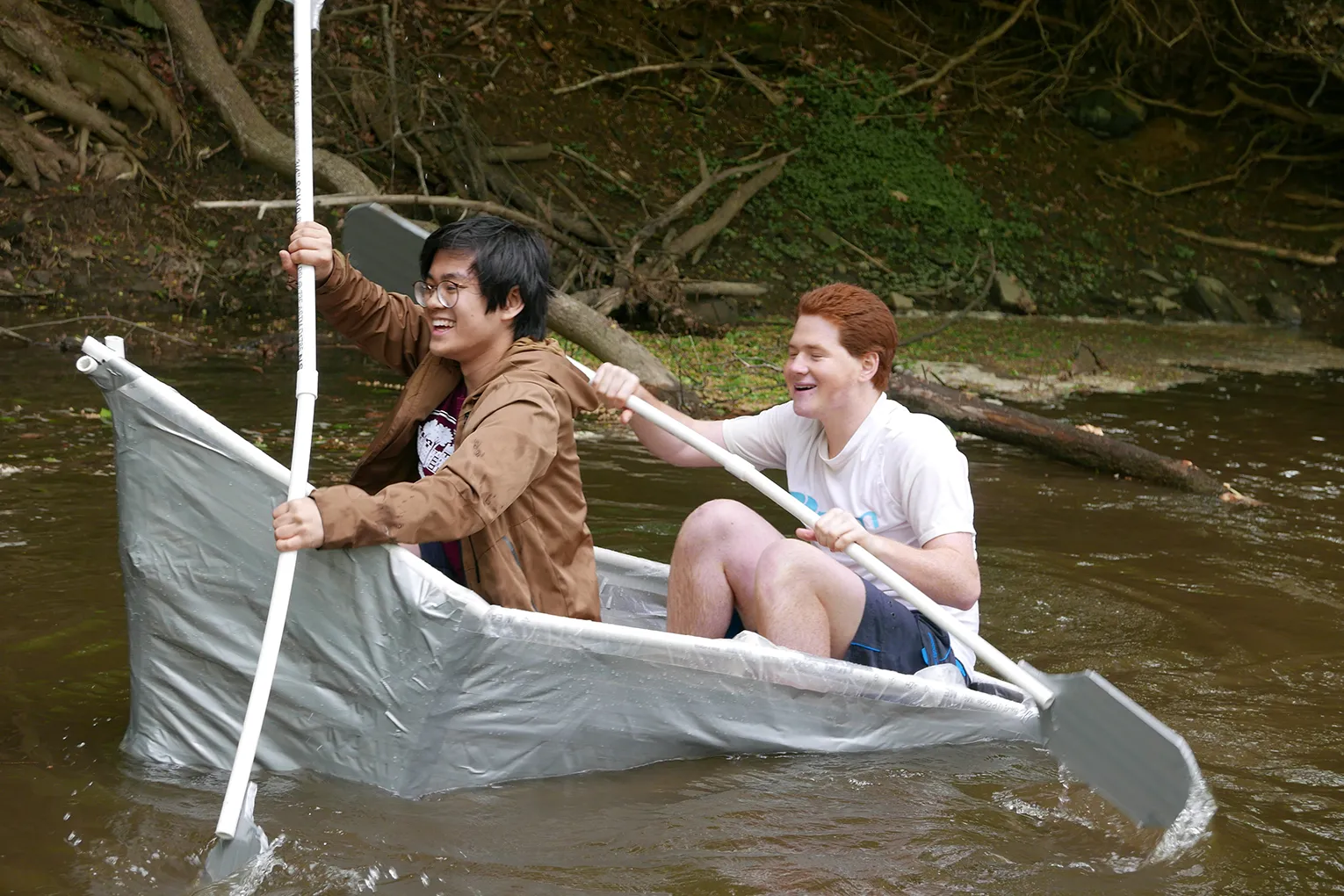Linguist K. David Harrison Raises Awareness of Global Language Loss at Smithsonian Folklife Festival Program
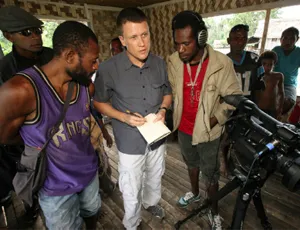
Associate Professor of Linguistics K. David Harrison in Papua New Guinea to record the endangered Panau language.
Of the more than 7,000 languages in the world, it is estimated nearly half are in danger of becoming extinct by the end of this century. The Smithsonian's Folklife Festival program "One World, Many Voices: Endangered Languages and Cultural Heritage", will focus attention on this urgent issue of global language loss by bringing together communities from around the world that are fighting to save their native tongues and cultural traditions.
"Language diversity is part of the bigger picture of sustainability and survival on the planet," says K. David Harrison, co-curator of the program and associate professor of linguistics. "If we care about intellectual diversity, we should also care about language diversity."
The free festival, on the National Mall from June 26 - 30 and July 3 - 7, will feature participants representing 15 cultures working to preserve their languages. Musicians, storytellers, singers, dancers, poets, culinary experts, and craftspeople will share how language embodies cultural knowledge, identity, values, technologies, and arts. The program will include performances, craft demonstrations, interactive discussion sessions, community celebrations and hands-on family activities. This is the first time the festival has featured language preservation as one of its themes.
The main challenge, Harrison says, was to take something abstract like language revitalization and put it on at a festival. "Our strategy has been to bring cultural experts - I call them 'language warriors' - from 20 communities from around world who are also experts in material or performative culture," he says. "So, there will be, for example, an epic tale teller, basket weaver, or someone who is performing music or dance in a ritual ceremony who will also explain why their art would not be possible without their language."
Harrison's involvement with the festival began three years ago when he was contacted by the Smithsonian about the talking dictionaries he developed as a result of his work with the National Geographic's Enduring Voices Project. The dictionaries - some of which represent the first time that a language has been recorded or written down anywhere - contain more than 32,000 word entries in eight endangered languages, more than 24,000 audio recordings of native speakers pronouncing words and sentences, and photographs of objects from the cultures represented.
"This is a Swarthmore College project"
Harrison, who joined the Swarthmore faculty in 2001, counts numerous students and alums who have contributed to this work over the years and has recruited several, including Jennifer Johnson '12, as festival volunteers. Johnson worked with Harrison to produce a talking dictionary for the Native American language known as Siletz Dee-ni, spoken in Oregon. Now a graduate student at Georgetown University's Center for Language Education and Development, she will be "fulltime on the Mall," Harrison says, "helping to interface between the Siletz speakers and to continue her work that she started here in my lab."
The Swarthmore connections even extend to Wren Elhai '08, who first got to know Harrison during his Watson Fellowship year when he was travelling in Russia. Now working for the State Department in Moscow, he is helping speakers of Tuvan with their visas for the festival.
For Harrison, his involvement with the festival has been nothing short of amazing. "Ten years ago, I worked as a presenter at the festival on the silk road, as part of small delegation from Siberia. To be invited to be a guest curator is a big honor."
"One World, Many Voices" is produced in collaboration with UNESCO, the National Geographic Society's Enduring Voices Project, and the Smithsonian's Recovering Voices Initiative.
